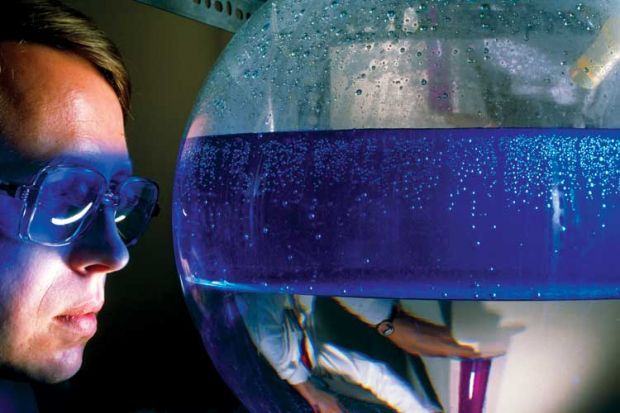The pledge is made in the government’s response to the committee’s report on scientific infrastructure, which was published in November 2013.
The report warns that the UK’s future scientific competitiveness is being hampered by the lack of a long-term strategic investment plan for infrastructure.
It called on the government to produce a 10-15 year strategy, with an underpinning investment plan, including “indicative” plans for an even longer timeframe.
In its response, the government says universities and science minister David Willetts will lead a consultation on long-term science capital, “which will identify strategic UK priorities for building a world-class science and research infrastructure up to the 2020s”.
This will ensure that that the UK “makes the most” of the government’s “unprecedented” commitment, in last year’s spending review, of £1.1 billion in science capital funding each year from 2015-16, rising with inflation until 2020-21.
The capital investment roadmap that arises from the consultation will be “central” to the “science and innovation strategy” that the government will publish at the time of this year’s autumn statement.
It will also set out the UK’s “ambitions and objectives” for involvement in large pan-European and global facilities.
The committee worried that the UK’s approach was not sufficiently engaged, proactive and coordinated.
Reacting to the committee’s concerns about a “damaging disconnect” between capital investment and provision of running costs, the consultation will also “seek views on the sustainability of capital investments”.
The government has also heeded the committee’s recommendation that it establish a ministerial advisory group on capital investment.
Chaired by Sir John O’Reilly, the director-general for knowledge and innovation at the Department for Business, Innovation and Skills, and including representatives from funders, industry and charities, the group will advise on the roadmap, as well as on how the remaining 2015-16 capital budget should be spent.
It will also consider how further equipment sharing can be facilitated, following the establishment of several regional alliances of research universities, such as N8, M5, GW4 and SES-5. Sir Ian Diamond, vice-chancellor of the University of Aberdeen, will also carry out an “efficiency review” to examine the issue further.
The committee’s chair, Lord Krebs, said: “We are delighted that the government has agreed with our key recommendations.
“The UK has an enviable reputation internationally for the range and quality of its large scale scientific facilities, and we very much hope that the processes to be followed by the government will cement the UK’s position at the forefront of scientific research for the long term.”




